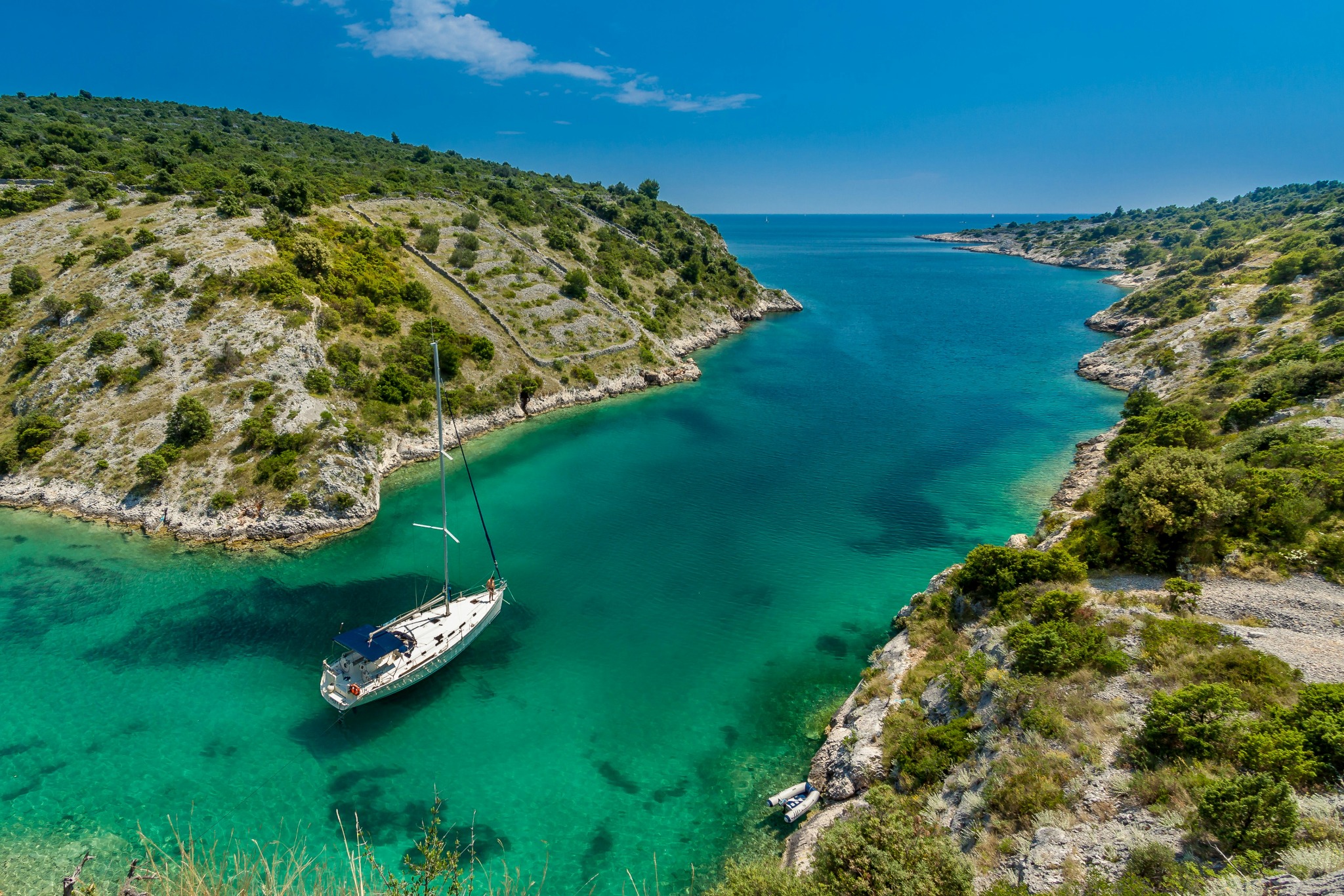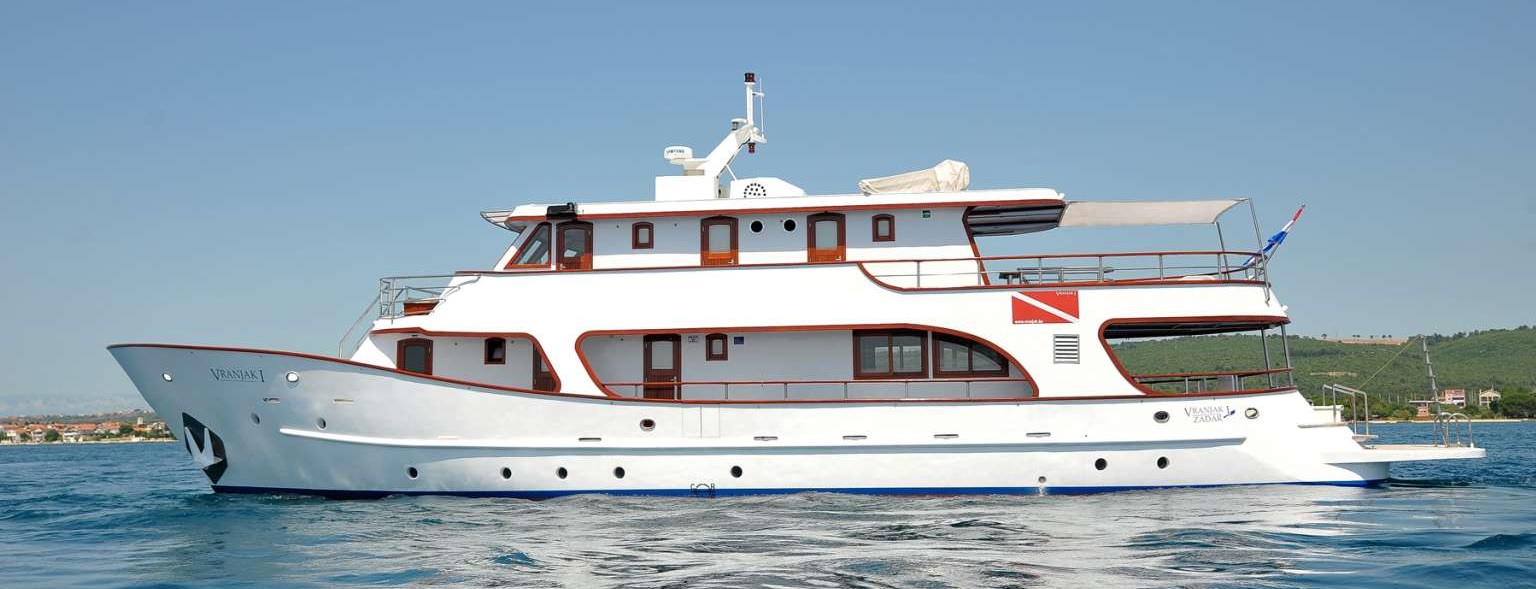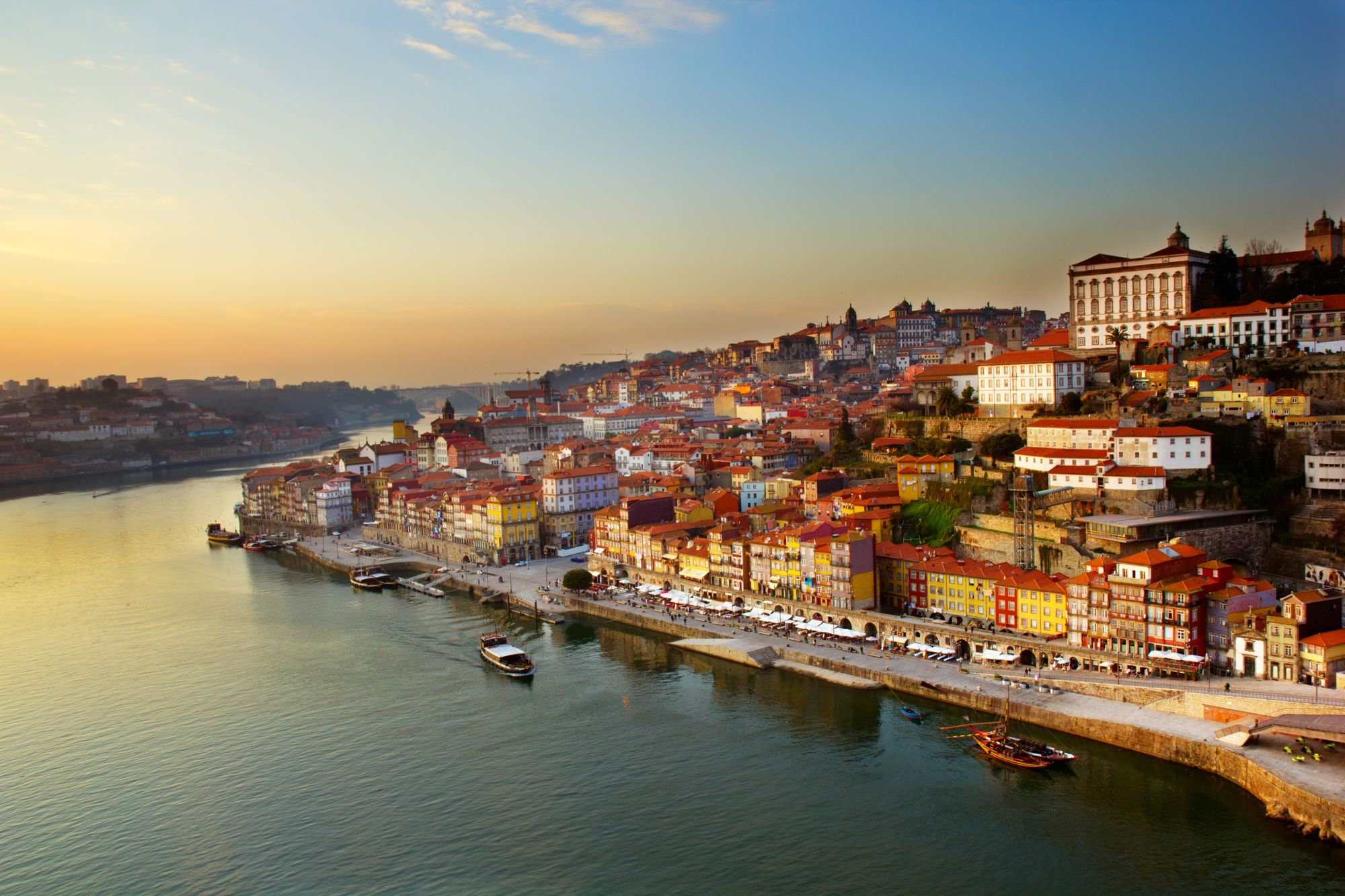
Best Croatia Liveaboards
Liveaboard Diving in Croatia
Croatia, nestled on the Adriatic Sea, is a premier diving destination characterized by its clear blue waters, rich historical heritage, and abundant marine life. With its varied diving locations, including the renowned National Park Kornati, the mysterious island of Vis, the enchanting Hvar Island, and the picturesque Dalmatian Coast, Croatia offers an underwater adventure for every type of diver.
National Park Kornati is a nautical paradise, featuring more than 140 uninhabited islands, islets, and reefs. Divers can explore the underwater cliffs plunging deep into the blue, where gorgonians, sponges, and a diverse array of fish thrive. The Kornati Archipelago is also famous for its biodiversity and is a haven for underwater photographers aiming to capture the vibrant life that lies beneath.
Vis Island, further from the mainland, holds secrets of ancient shipwrecks and submerged airplanes, making it a hotspot for wreck divers. The island’s underwater caves and grottos provide a unique diving experience, with the Blue Cave being a highlight, where sunlight creates magical blue hues. The waters around Vis are teeming with life, including lobsters, octopuses, and schools of silverfish, offering an unforgettable dive experience.
Hvar Island is known for its crystal-clear waters and lush underwater seascapes. Diving here, one can encounter dense fields of seagrass, home to seahorses and small fish, while night dives reveal the nocturnal beauty of the Adriatic Sea. Hvar’s Pakleni Islands offer secluded dive sites, with walls covered in marine life and the chance to swim among grouper, sea bream, and moray eels.
The Dalmatian Coast, stretching along the eastern shore of the Adriatic Sea, is dotted with numerous dive sites that cater to all levels. The coast is renowned for its clear waters, offering excellent visibility often exceeding 30 meters. Diving along the Dalmatian Coast, enthusiasts can explore underwater canyons, fascinating rock formations, and vibrant coral reefs. The region’s rich history is reflected underwater with numerous archaeological sites, including Roman and medieval shipwrecks, providing a glimpse into the past
When To Go Diving in Croatia
The best time to dive in Croatia is from May to October when the water temperature ranges from 18°C to 25°C (64°F to 77°F). During the summer months (June to August), temperatures can range from 22°C to 25°C (72°F to 77°F), providing comfortable conditions for diving with a thin wetsuit or even a shorty. In the spring (April and May) and autumn (September and October), temperatures are cooler, ranging from 16°C to 22°C (61°F to 72°F), requiring a thicker wetsuit, typically around 5mm to 7mm. During the winter months, the water temperature can drop to between 12°C and 15°C (54°F to 59°F), which might necessitate a drysuit for those who choose to dive during this period.
Generally, the currents in the Adriatic are mild, making for easy and safe diving conditions. However, some dive sites, especially those located near the open sea or in channels between islands, can experience stronger currents. These sites offer exciting drift diving opportunities but are recommended for more experienced divers
Frequently Asked Questions About Croatia
What Marine Life Can I Expect to See?
When diving in the crystal-clear waters of Croatia, you're entering a vibrant underwater world, rich in marine biodiversity and teeming with life. The Adriatic Sea, with its unique geographical location and varied underwater topography, offers divers an opportunity to encounter a wide array of marine species. From the colorful inhabitants of coral reefs to the mysterious dwellers of deep-sea wrecks, Croatia's marine life is both diverse and fascinating.
- Colorful Reef Fish: The reefs and rocky outcrops along the Croatian coast are bustling with activity. Divers can expect to see a variety of reef fish, including schools of chromis, damselfish, and the strikingly patterned wrasse. Gobies, scorpionfish, and blennies also make frequent appearances, adding to the colorful spectacle.
- Pelagic Species: Venturing further into the open sea, divers can encounter larger pelagic species. Tuna and mackerel are often seen darting through the water, while the majestic swordfish and elusive sharks, such as the blue shark, add a thrill to any dive.
- Octopuses and Squid: The seabed is home to the intelligent octopus, which can be observed manipulating objects and camouflaging itself within its environment. Squid, with their mesmerizing color changes and swift movements, are also a common sight, especially during night dives.
- Nudibranchs and Cephalopods: For lovers of macro photography, the Adriatic Sea is a treasure trove of nudibranchs, showcasing a variety of shapes, colors, and sizes. Cuttlefish, with their ability to change texture and color, provide fascinating encounters.
- Seahorses and Pipefish: In the seagrass meadows, divers might be lucky enough to spot the delicate seahorse or its cousin, the pipefish. These areas are crucial nurseries for many species of fish and invertebrates.
- Dolphins and Seals: While more rare, the chance to see dolphins or the Mediterranean monk seal in their natural habitat is a memorable experience. These protected species are a testament to the conservation efforts in the Adriatic Sea.
- Sea Turtles: The loggerhead sea turtle, another protected species, can occasionally be seen gliding gracefully through the water, especially around the more remote islands.
- Sponges and Corals: The underwater landscape is adorned with a variety of sponges and corals, creating a dynamic backdrop for dives. Gorgonian fans, particularly, are a sight to behold, with their intricate patterns and vibrant colors.
Diving in Croatia not only offers the chance to see a rich variety of marine life but also contributes to the understanding and appreciation of the Adriatic's underwater biodiversity. With keywords like "diving in Croatia," "Adriatic Sea marine life," and "underwater biodiversity Croatia," divers and marine enthusiasts can easily find information on the best diving spots and the species they might encounter, making Croatia a top destination for diving in Europe
Are There Any Wreck Dives?
Wreck diving in Croatia offers an intriguing glimpse into the past, with the Adriatic Sea serving as a final resting place for a variety of sunken vessels and aircraft. These sites, accessible from liveaboards, provide unique underwater experiences tailored to different skill levels and interests. Let's explore three notable wrecks: the Ledenik, the Francesca da Rimini, and the Štuka airplane.
Ledenik
The Ledenik, a relatively recent addition to the Adriatic's underwater museum, lies at a depth of only 20 meters, making it an ideal site for beginner divers. However, its size and the mysteries it holds also attract more experienced divers. The ship, approximately 50 meters in length, provides an extensive area to explore. Its position at a shallow depth means that sunlight penetrates down to the wreck, illuminating its structure and allowing for clear visibility. Divers can swim through the ship, observing the marine life that has begun to reclaim this man-made structure as their home. The Ledenik's accessibility from liveaboards makes it a popular choice for divers seeking an introduction to wreck diving in Croatia.
Francesca da Rimini
Reserved for advanced scuba divers and technical divers, the Francesca da Rimini is a dive site that demands respect and preparation. This wreck is not only a dive into history but also a journey into a protected underwater cultural heritage site. The Francesca da Rimini, recognized for its historical value, can only be dived with the support of a local dive club, ensuring the preservation of the site and providing a controlled diving environment. Divers who venture here are treated to an extraordinary experience, exploring the remnants of a vessel steeped in history, now serving as a habitat for a variety of Adriatic marine life. The complexity and depth of this wreck make it a must-visit for those with the necessary experience and qualifications.
Štuka Airplane
The wreck of the Štuka airplane adds a different dimension to wreck diving in Croatia. Sunken aircraft are rarer and provide a unique underwater experience. Diving an airplane wreck allows divers to see the skeletal remains of these once-powerful machines, now quietly resting on the seabed. The Štuka, with its distinctive silhouette, is a poignant reminder of the past, offering divers the chance to explore something out of the ordinary. The site's specifics, including depth and conditions, cater to divers with a keen interest in aviation history and underwater exploration.
Wreck diving in Croatia, accessible via liveaboard diving cruises, presents a diverse array of sites ranging from beginner-friendly shallows to advanced depths requiring technical diving skills. Each wreck tells its own story


